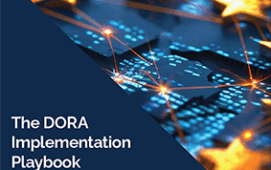
The European Securities and Markets Authority’s (ESMA’s) pilot of a Digital Ledger Technology (DLT) regulatory regime, which includes the standard Digital Token Identifier (DRI), is up and running. The pilot will operate for six years, during which regulated investment firms, market operators and central securities depositories operating DLT market infrastructure will be able to apply to National Competent Authorities (NCAs) for exemption from certain requirements under Markets in Financial Instruments Regulation (MiFIR), Central Securities Depository Regulation (CSDR), and the Settlement Finality Directive.
ESMA recommended use of the ISO standard 24165 DTI for the pilot of the DLT regulatory regime early this year. DTIs are issued by the DTI Foundation (DTIF), a non-profit division of Etrading Software, with a view to bringing standardisation to digital asset and crypto markets. The pilot extends the MiFIR reporting regime to cover tokenised financial instruments, and brings pre- and post-trade transparency and market abuse monitoring to DLT-based securities.
“The DTI standard is critical to helping industry know what it is dealing with,” says Sassan Danesh, CEO of Etrading Software. “As the industry continues to adopt the standard to build increased transparency and clarity in the market, ESMA’s pilot signals the importance given to pre- and post-trade transparency and protecting industry against market abuse.”
Following the recommendation of the DTI, ESMA issued a Q&A on the DLT pilot regime. On 3 February 2023, ESMA updated the Q&A, which was first published on 16 December 2022, recommending that trading venues, investment firms and approved publication arrangements complement the ISIN by including the DTI when publishing MiFIR post-trade information under Table 3 of Annex I of RTS 1 for equity and equity-like instruments, and Table 2 of Annex II of RTS 2 for non-equities.
DTIF and the Association of National Numbering Agencies (ANNA), the ISO Registration Authority for ISO 6166 International Securities Identification Numbers (ISINs), have been running a joint task force to explore synergies between DTIs and ISINs. The task force has suggested close cooperation between the registration authorities and has been working on identifying security tokens with existing ISINs so that these can be issued with DTIs. So far, over fifty such tokens have been identified, verified and added to the DTI registry.
Stephan Dreyer, managing director of ANNA, says: “Working with the DTIF, ANNA is building interoperability between the ISIN and DTI to harmonise standards in this space. The ISIN standard will continue to provide unique instrument identification as it has for the past forty years and will incorporate new assets, including digital assets.”
Subscribe to our newsletter




